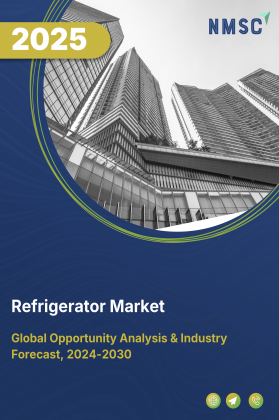
3D Die Stacking Market by Component (Software, Hardware, and Service), by Technology (Through-Silicon Via (TSV) Technology, 2.5D Interposer Technology, and Others), by Material (Si, SiGe, GaAs, and Others), by Product (3D IC, 2.5D IC, and 3D Packaging), by Application (Memory, Logic, and Others), and by End-User (Consumer Electronics, Automotive, Healthcare, Manufacturing, Defence, and Others) – Global Opportunity Analysis and Industry Forecast 2024-2030
3D Die Stacking Market Overview
The global 3D Die Stacking Market size was valued at USD XX billion in 2023 and is predicted to reach USD XX billion by 2030 with a CAGR of XX% from 2023-2030.
The 3D die stacking, also known as 3D integrated circuit (IC) stacking market focuses on the technology of stacking multiple semiconductor chips vertically to create a single, compact component. This method improves performance by increasing processing power and memory capacity while saving space. It is widely used in various industries, including consumer electronics, automotive systems, healthcare devices, and industrial automation. By allowing for the creation of smaller, more powerful components, 3D integrated circuit stacking supports advanced technology and helps address the need for both high performance and efficient use of space.
Market Dynamics and Trends
The increasing demand for consumer electronic devices such as smartphones and laptops is increasing the 3D die stacking market demand. As the demand for advanced technology that deliver high performance in compact formats increases, this technology allows for more efficient use of space and power, resulting in smaller, and powerful devices.
As per the report published by the World Economic Forum, the mobile subscribers in 2022 recorded to be 8.58 billon. This surge in adoption of smartphones drives the demand for smaller and powerful devices, thereby fuelling the growth of the market.
Moreover, the rising healthcare spending drives the demand for advanced, compact electronic components, such as medical devices, diagnostic tools, and wearable monitors. 3D die stacking technology meets this demand by providing high-performance, space-efficient solutions, that facilitate the development of sophisticated healthcare technologies.
As per the report published by the Ministry of Health and Welfare, the total budget for healthcare in India was around USD 10.69 billion in 2023. Additionally, as per the Government of Australia, the total budget on healthcare sector in 2022 in Australia was around USD 71.9 billion. The surge in investment in healthcare sector by the government drives the demand for latest and advanced technologies, further fuelling the growth of the market.
Furthermore, the rising investment in artificial intelligence (AI) is boosting the 3D die stacking market growth. As AI applications become more prevalent, there is an increased demand for high-performance, compact computing solutions. 3D integrated circuit stacking technology addresses this need by delivering high-performance, compact processors, thereby facilitating the advancement and deployment of AI systems.
For instance, in 2023, the investment in AI across the globe by various corporates was accounted to be USD 168.22 million. This significant investment highlights the essential role of 3D die-stacking technology in meeting the growing demands of AI and supporting future innovations in the industry.
However, the high cost of production and development of 3D integrated circuit stacking is the major factor restraining the growth of the market. On the contrary, the introduction of advanced technologies such as web 4.0 and 5G technology is expected to create ample opportunities for the market in the coming years. These technologies require high-efficient ICs for real-time data processing, autonomous decision-making, and high-speed communication in various applications such as autonomous vehicles, virtual reality, and edge computing.
Market Segmentations and Scope of the Study
The 3D die stacking market report is segmented on the basis of component, technology, material, product, application, end-user, and region. On the basis of component, the market is divided into software, hardware, and services. On the basis of technology, the market is classified into through-silicon via (TSV) technology, 2.5d interposer technology, and others. On the basis of material, the market is segmented into Si, SiGe, GaAs, and others. On the basis of product, the market is divided into 3D IC, 2.5D IC, and 3D packaging. On the basis of application, the market is classified into memory, logic, and others. On the basis of end user, the market is segmented into consumer electronics, automotive, healthcare, manufacturing, defence, and others. Regional breakdown and analysis of each of the aforesaid segments include regions comprising of North America, Europe, Asia-Pacific, and RoW.
Geographical Analysis
Asia-Pacific dominates the 3D die stacking market share and is expected to continue its dominance during the forecast period. This is attributed to the growing government initiative for the development of electronics manufacturing in this region driving the demand for 3D integrated circuit stacking to increase the density and efficiency of electronic devices.
According to the India Cellular & Electronics Association, the government of India plans to invest USD 300 billion in the development of electronics manufacturing and exports by 2026. This significant investment highlights the Asia-Pacific region's dedication to advancing electronics manufacturing, further solidifying its leading position in the market.
Moreover, the growing automotive industries in countries such as China, Japan, and India are further driving the growth of the market in this region. 3D die stacking is being used in automobiles to increase the amount of memory and processing power available for advanced driver assistance systems (ADAS) and autonomous driving features to improve the efficiency of vehicles.
According to the International Organization of Motor Vehicle Manufacturers, China's vehicle production reached 30.5 million units in 2023, reflecting a significant increase of approximately 13% from the vehicles produced in 2022, highlighting the increased demand for advanced automotive technologies.
On the other hand, North America is anticipated to see steady growth in the 3D die stacking market expansion, primarily due to significant government investments in the aerospace and defense sectors. According to a U.S. Government report, the Department of Defense received USD 2.09 trillion in budgetary resources, with USD 973 billion allocated specifically for advancing military capabilities, including the development of cutting-edge weapons, UAVs, and other tactical equipment. This substantial rise in funding is expected to drive demand for advanced technologies such as 3D die stacking, which are crucial for enhancing the performance and miniaturization of electronic components used in defense applications.
Moreover, the developed manufacturing industries and the increasing adoption of industrial automation in countries such as the U.S. and Canada are further driving the growth of the market. The industrial sector is increasingly using 3D integrated circuit stacking in a variety of applications, such as factory automation, robotics, and control systems.
According to the U.S. Department of Commerce, the manufacturing industry in the U.S. contributed USD 2.3 trillion to the U.S. GDP in 2022, accounting for 11.4% of the total. This contribution highlights the role of advanced technologies including 3D die stacking in supporting and enhancing industrial processes.
Competitive Landscape
Various key players operating in the 3D die stacking industry include Samsung Electronics, SK Hynix Micron Technology, Intel Corporation, TSMC (Taiwan Semiconductor Manufacturing Company), Toshiba Memory Corporation, Western Digital KIOXIA, Advanced Micro Devices Inc. (AMD), NXP Semiconductors, Siemens Digital Industries Software, Fujitsu, and others. These market players are adopting product launches as their key developmental strategy to remain dominant in the market.
For instance, in December 2022, Intel Corporation launched 2D and 3D IC packaging technologies with increased density up to 10 times. Through this launch, the company aimed to provide a super-thin material for more power and energy efficiency in ICs.
Moreover, in September 2022, Siemens Digital Industries Software launched Tessent multi-die solution speed and simplify critical design-for-test (DFT) tasks for next-generation integrated circuits (ICs) based on 2.5D and 3D architectures.
Furthermore, in March 2022, Advanced Micro Devices Inc. launched server CPUs built with 3D die-stacking technology. The new processor was based on 3rd generation Zen architecture for technical computing workloads such as computational fluid dynamics, finite element analysis, electronic design automation, and structural analysis.
Key Benefits
-
The market report provides the quantitative analysis of the current market and estimations from 2024 to 2030. This analysis assists in identifying the prevailing market opportunities to capitalize on.
-
The study comprises of a detailed analysis of the current and future 3D die stacking market trends for depicting the prevalent investment pockets in the market.
-
The information related to key drivers, restraints, and opportunities and their impact on the market is provided in the report.
-
The competitive analysis of the market players along with their market share in the market is mentioned.
-
The SWOT analysis and Porter’s Five Forces model are elaborated in the study.
-
The value chain analysis in the market study provides a clear picture of the stakeholders’ roles.
3D Die Stacking Market Key Segments
By Component
-
Software
-
Hardware
-
Service
By Technology
-
Through-Silicon Via (TSV) Technology
-
2.5D Interposer Technology
-
Others
By Material
-
Si
-
SiGe
-
GaAs
-
Others
By Product
-
3D IC
-
2.5D IC
-
3D Packaging
By Application
-
Memory
-
Logic
-
Others
By End-User
-
Consumer Electronics
-
Automotive
-
Healthcare
-
Manufacturing
-
Defence
-
Others
By Region
-
North America
-
U.S
-
Canada
-
Mexico
-
-
Europe
-
Germany
-
France
-
Italy
-
Spain
-
United Kingdom
-
Russia
-
Sweden
-
Rest of Europe
-
- Asia-Pacific
-
Australia
-
China
-
India
-
Japan
-
South Korea
-
Indonesia
-
Singapore
-
Rest of Asia-Pacific
-
-
RoW
-
Latin America
-
Middle East
-
Africa
-
REPORT SCOPE AND SEGMENTATION
|
Parameters |
Details |
|
Market Size in 2023 |
USD XYZ billion |
|
Revenue Forecast in 2030 |
USD XYZ billion |
|
Growth Rate |
CAGR of XYZ% from 2024 to 2030 |
|
Analysis Period |
2023–2030 |
|
Base Year Considered |
2023 |
|
Forecast Period |
2024–2030 |
|
Market Size Estimation |
Billion (USD) |
|
Growth Factors |
|
|
Countries Covered |
28 |
|
Companies Profiled |
10 |
|
Market Share |
Available for 10 companies |
|
Customization Scope |
Free customization (equivalent to up to 80 working hours of analysts) after purchase. Addition or alteration to country, regional, and segment scope. |
|
Pricing and Purchase Options |
Avail customized purchase options to meet your exact research needs. |
Key Players
-
Samsung Electronics
-
SK Hynix Micron Technology
-
Intel Corporation
-
TSMC (Taiwan Semiconductor Manufacturing Company)
-
Toshiba Memory Corporation
-
Western Digital KIOXIA
-
Advanced Micro Devices Inc. (AMD)
-
NXP Semiconductors
-
Siemens Digital Industries Software
-
Fujitsu

















 Speak to Our Analyst
Speak to Our Analyst

























